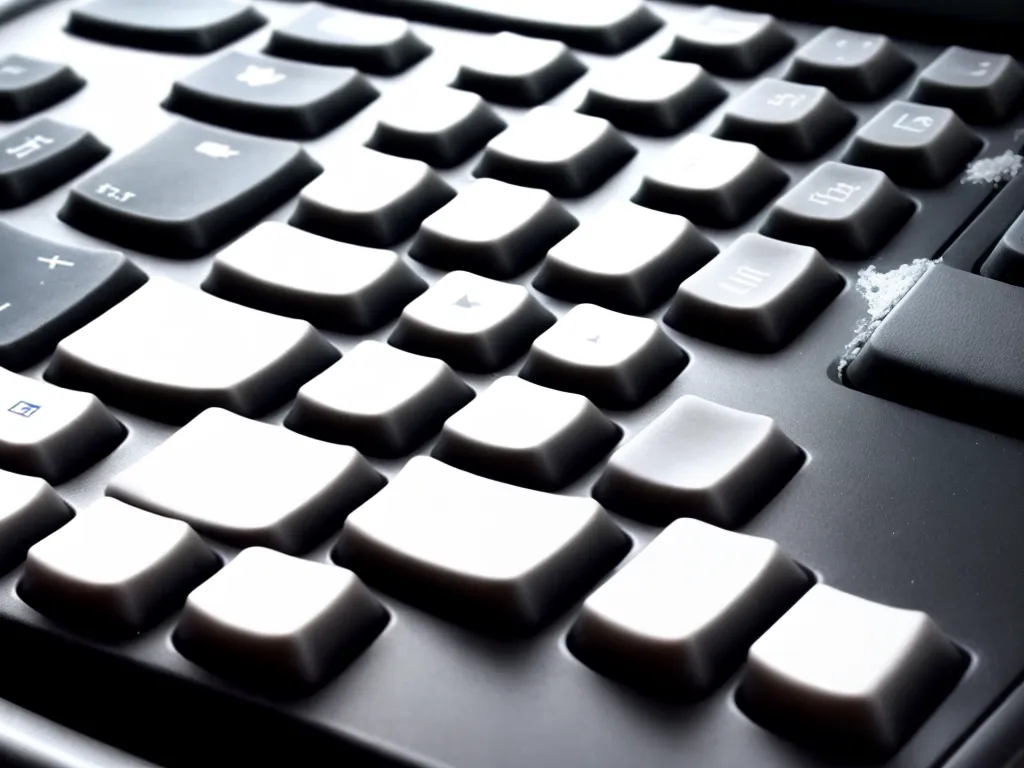
Why You Should Clean Your Keyboard
Keeping your keyboard clean is important for several reasons:
Prevent Built-Up of Dirt and Debris
As you use your keyboard day after day, dirt, dust, oil, crumbs, and other debris can build up between the keys and under the keyboard. If allowed to accumulate, this debris could eventually cause keys to stick or malfunction. Regular cleaning helps prevent this buildup.
Remove Germs and Bacteria
Your keyboard can harbor bacteria and germs that can cause illness. Cold and flu viruses can live for up to 48 hours on hard surfaces like keyboards. Cleaning your keyboard regularly helps remove these germs and bacteria.
Extend Your Keyboard’s Life
Letting debris and dirt build up can wear down your keyboard over time, shortening its lifespan. Keeping it clean helps prevent deterioration and extends its life.
Improve Appearance
A dirty keyboard simply looks bad. Cleaning it makes it look like new again. This is especially important before selling or donating your keyboard.
How to Clean Your Keyboard
Cleaning your keyboard is easy to do yourself. Here are some simple steps:
1. Unplug the Keyboard
Before cleaning, always unplug your keyboard from your computer. This prevents you from accidentally pressing keys or buttons while cleaning.
2. Turn Keyboard Upside Down
Turn your keyboard upside down and give it a few gentle shakes over a trash can or outside. This will help dislodge dirt, crumbs, and other loose debris.
3. Use Compressed Air
Use a can of compressed air to blow away any remaining particles lodged between the keys or under the keyboard. Tilt and rotate the keyboard to reach all areas.
4. Dampen a Soft Cloth or Cotton Swab
Dampen a soft lint-free cloth or cotton swab with isopropyl alcohol or an electronics cleaning solution. Avoid using water.
5. Wipe Between and Under Keys
Gently wipe the dampened cloth over the tops of the keys and in between each key. Use cotton swabs dipped in cleaning solution to reach tight areas. Take care not to oversaturate.
6. Clean Keyboard Surface
Use another clean, slightly damp cloth to wipe down the keyboard’s surface, including along the edges and brand name logo area. Avoid getting moisture into open crevices.
7. Allow to Dry
Allow your keyboard to dry completely before plugging it back in. Try using a can of compressed air to speed up drying time.
8. Disinfect Regularly
About once per week, disinfect your keyboard using disinfecting wipes or spray containing at least 70% alcohol. This helps kill germs and bacteria.
What to Avoid When Cleaning Your Keyboard
- Don’t use excessive liquids that could seep into the interior.
- Avoid abrasive cleaners or scrubbing that can wear down the keys.
- Never submerge the keyboard in water or cleaning solutions.
- Don’t use a vacuum cleaner – this can cause static electricity discharge.
- Avoid harsh chemicals like bleach that could damage plastic.
Signs It’s Time to Replace Your Keyboard
If your keyboard remains grimy after thorough cleaning, or keys become unresponsive, it may be time to replace it. Other signs include frayed cord insulation, missing keycaps, and bent or broken connectors. For longevity, replace your keyboard every 2-4 years.
By regularly cleaning your keyboard and taking precautions not to oversaturate it with liquids, you can safely remove dirt, debris, and germs from its surface. This simple maintenance keeps your keyboard in good working order and extends its lifespan.












